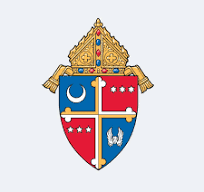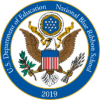To enhance our curriculum and instruction, St. Raphael School incorporates state-of-the-art technology. Interactive whiteboards in every classroom include document cameras for dynamic learning. Every middle-school student is assigned an iPad, which can be linked to the Promethean board using our Apple TV devices. Teachers use online programs such as SAFARI Montage, Quizlet, and Flipgrid to provide students with the most up-to-date information available and to simply make learning more fun. We have computers in every classroom available for student use, as well as a fully equipped media center. All work together to provide enriched, challenging learning.
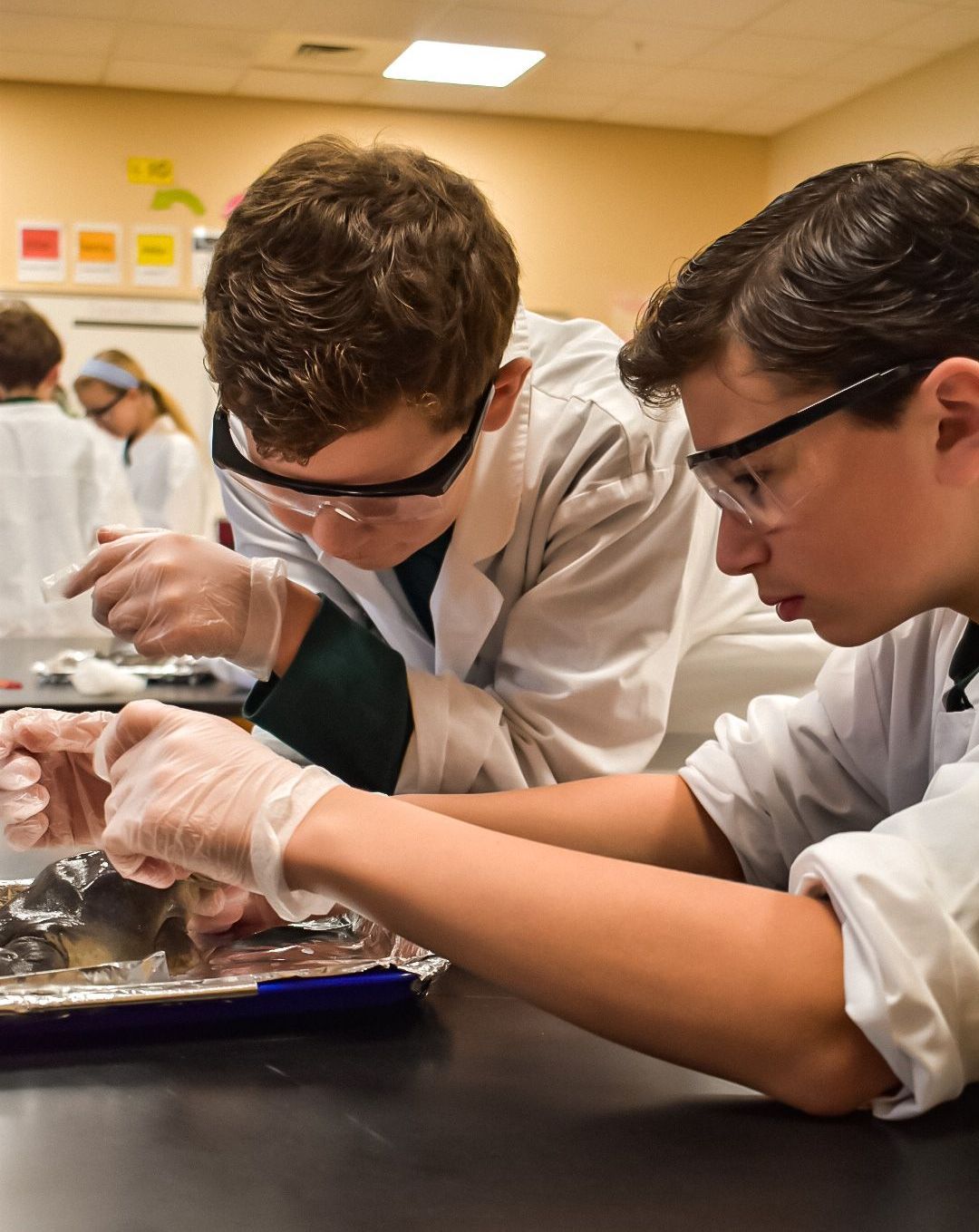
Customized Education
St. Raphael School is blessed to be housed in a state-of-the-art facility that opened in 2011. We are a unique school in that all of our students receive a significant amount of individualized attention. Differentiated learning and small-group instruction are woven throughout a rigorous academic curriculum. Our lower teacher-student ratios mean all children receive greater attention. We accelerate children who are ready to advance, while ensuring that those who require extra help get exactly that. We cap each grade at 26 students, and our learners are broken into smaller groups for reading and math instruction. Our students are growing in both areas and have some of the highest test scores in the Archdiocese of Washington.
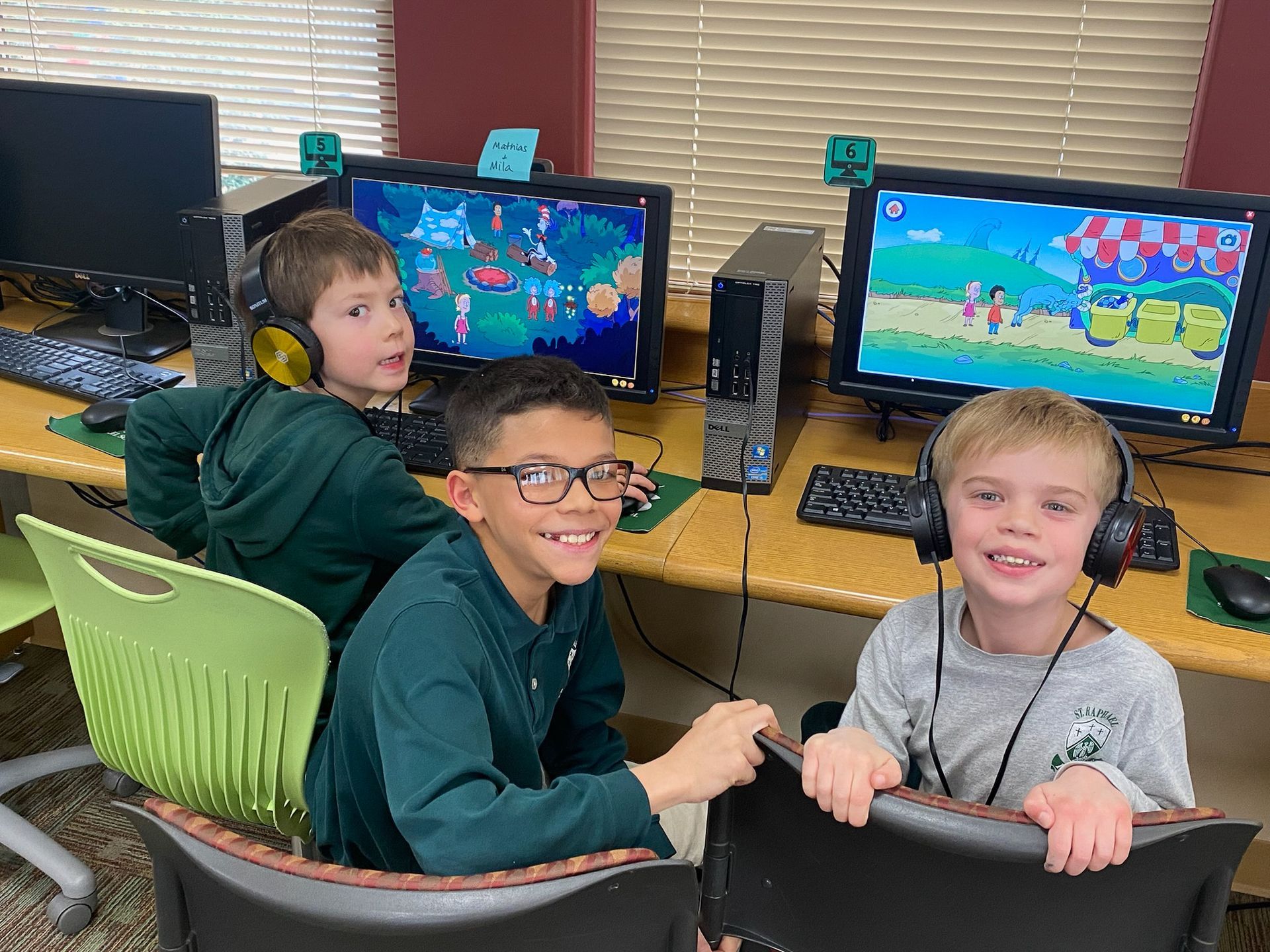
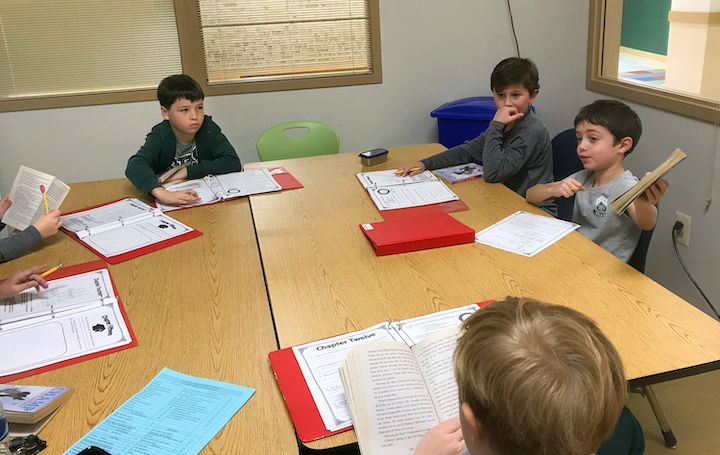
Curriculum Overview
St. Raphael School's curriculum is driven by the Archdiocese of Washington Academic Standards. Originally the ADW modeled its curriculum after the top-ranked Indiana Standards. We do not "teach to the test" but instead employ thematic approaches to education. By developing a framework around a core theme, our teachers identify specific multidisciplinary goals. These areas of academic study are then enriched by the Core Knowledge Sequence, which is a sequential building of knowledge to avoid repetition and gaps in basic areas of learning. Each grade level has an average of three Signature Units. Students explore independently and as a group as they accomplish the cross-curricular milestones. Typically these subjects culminate with a field trip or an in-school presentation. These units enhance our traditional foundation of learning—which is language-rich, math-focused, and includes a hands-on science approach—while always keeping our Catholic identity at the center.
Academic Disciplines
-
Language & Arts
Grades K-5: Our elementary Language Arts Program strives to cultivate lifelong learners who view reading and writing not only as fundamental tools of communication but as sources of discovery and inspiration. Shared stories, both written and spoken, build our foundation, and an array of books of every style establishes the framework for our program. Building upon our phonetic skills learned in primary levels, the intermediate level focuses on comprehension, vocabulary, and fluency in reading. We seek to help young learners become thoughtful, critical, and imaginative readers and writers as well as speakers and listeners.
The relationship between reading and writing is fostered in our language-rich classrooms, where students read for information as well as pleasure and write to convey concepts. Our penmanship program, Handwriting Without Tears, is introduced in the primary years and extends from the beginning printer to the experienced cursive writer. Our curriculum is designed to nurture varied reading styles and interests and to challenge readers to make connections and explore different authors and genres. SRS students learn the process of writing—including drafting, revising, editing, and proofing—as essential steps to mastering the craft. Our Language Arts Program promotes student success through our small-group instruction—a major component in the customized education for which SRS is known.
Grades 6-8: The Language Arts Program at SRS seeks to develop thoughtful, creative, and critical thinkers through reading and writing as well as speaking and listening. Our robust curriculum teaches students to read effectively, challenge assumptions, and think critically. In addition to learning proper English mechanics and style, students are taught how to interpret written material, analyze writing from different perspectives, conduct research for projects, and write with clarity.
By enjoying a variety of literature, students become aware of other cultures, consider moral conflicts, and are exposed to values different from their own. Through their study of grammar, SRS middle-school students become more effective speakers and writers who are comfortable with English conventions and style. Our small-group instruction in reading continues through middle school and plays a major role in promoting student success in the subject of Language Arts.
Standardized Testing: Students in grades 3-8 are assessed in Language Arts three times a year using NWEA MAP testing. Growth is monitored and analyzed to continue to understand the student's mastery of Language Arts and meet him or her at the appropriate level.
-
Mathematics
Grades K-5: The math program is designed to help our students approach the subject with enthusiasm. We use Saxon Math in all grades. Saxon builds mastery by introducing new math concepts while constantly reviewing previously learned ones. Drawing on this foundation of skills, children are encouraged to explore an array of problem-solving approaches, to be comfortable with taking risks, and to be open to employing different strategies.
Our students enjoy a variety of experiences in our elementary school math program. They receive instruction in small groups, work independently as well as in teams, use manipulative tools, and play math games.
As the students’ math skills evolve, they expand their thinking from hands-on exercises to abstract reasoning. They learn to use concrete, verbal, and symbolic models to solve problems. Real-life data and scenarios provide the opportunity for our learners to analyze, design strategies, estimate, and calculate. In keeping with our cross-curricular approach to learning, math themes are integrated into other areas of study. The analytical and creative skills developed in our math program foster methods that can be applied to all types of learning.
Grades 6-8: The Math Department at St. Raphael School provides a rigorous program designed to meet a student at his or her individual level. Saxon Math continues in grades 6-8, where the spiral formatting allows for a deeper understanding of content and facilitates logical reasoning and problem-solving. Algebra 1, Geometry, and Algebra 2 are offered for those students capable of working at a more advanced level. Small-group instruction is employed across grade levels.
Standardized Testing: Students in grades 3-8 are assessed in math three times a year using NWEA MAP testing. Growth is monitored and analyzed to continue to understand the budding math student and meet him or her at the appropriate level.
-
Religion
Grades K-8: Our Catholic faith permeates every aspect of who we are at St. Raphael School. The study of religion is a way of life and is the starting point of all we do. At St. Raphael School, the entire student body begins each day in church for Morning Prayer, which sets the tone for how we go forth into our day. Formal religion classes are taught at each grade level and are guided by the religion standards set forth by the Archdiocese of Washington. We also teach the Catholic faith through service, weekly Mass, daily prayer, as well as the discussion of morals and values across the curriculum. As illustrated by our motto, Fides et Ratio (Faith and Reason), our Catholic faith is alive at St. Raphael School.
-
Science
Grades K-5: Children are natural scientists with endless curiosity. Employing a variety of techniques, materials, and technology, students in kindergarten through fifth grade receive classroom instruction to develop an understanding of the world around them. Using the Academic Standards of the Archdiocese of Washington as a framework, lessons are crafted to be engaging experiences that build interest and establish a foundation for the development of scientific knowledge. To support and enhance classroom instruction, the elementary school students visit the Science Lab weekly for hands-on activities. Young students classify, measure, build, take apart, and learn scientific principles through trial and error.
Grades 6-8: As students transition into middle school, the concepts learned in early grades are built upon and expanded. Students are prepared for high school through vigorous coursework in life, physical, and earth sciences. Lab experience remains a vital part of learning science at St. Raphael School. Students explore the cell through the lens of a microscope and then whole body systems by dissecting both a frog and a cow's eye. Earth concepts are explored through computer activities, but also by identifying minerals in sand from across the world. Physical sciences are most naturally adapted to the lab. Identifying physical and chemical changes, building atoms, and exploring Newton's law of motion help students solidify concepts learned from the book. Students continue learning through trial and error, but they also use the scientific process to design their own labs, analyze results, and make conclusions. Middle-school students participate in a judged science fair, and all students participate in an end-of-year STEM project.
-
Social Studies
Grades K-5: The mission of social studies in grades kindergarten through fifth is to provide experiences that develop in students the knowledge, concepts, strategies, and skills needed to promote citizenship in a diverse world. Good social studies instruction is meaningful, engaging, and challenging.
Social studies concepts are woven throughout our curriculum. Lessons actively engage students in the content of social studies by interacting with a variety of resources and then demonstrating what they have learned through various performance-based and traditional assessments.
Grades 6-8: Middle-school social studies is an integration of the social sciences that explain human relationships within society and the world around us. Students are encouraged to develop the skills necessary to become informed citizens of our world. The following disciplines are included in social studies classes:
Geography—understanding the world around us, including the five themes of geography
Civics—the role students play as citizens in a democratic society
Government and law—understanding our democratic republic and the Charters of Freedom, including the Constitution
History—understanding past events and their impact on the world today
Economics—understanding the different types of economies and the transfer and consumption of material goods
Religion—a reflection on our Catholic faith and other faiths in the world to gain a deeper appreciation of all cultures
In sixth grade, we study ancient civilizations, the Middle Ages, Renaissance, Enlightenment, early North and South American civilizations, and settlement of the Americas by European countries.
In seventh grade, we study the continent of Africa, the early African civilizations into the Middle East. Then we move into Asia, with a study of the Indian sub-continent, China, Japan, the Koreas (including ancient and modern history), and Oceania.
In eighth grade, we study the American Revolution until Reconstruction.
-
Spanish
Grades K-3: Through songs and games, students in the lower grades learn basic vocabulary and conversational Spanish that will become the foundation for future years of learning. Traditional Hispanic songs, chants, rhymes, games, stories, and written activities are part of our regular lessons. Classes start with a prayer in Spanish, and religious and Hispanic holidays, as well as cultural celebrations, are introduced during the course of the year.
Through their primary school years, students learn by familiarizing themselves with new words and simple sentences, adding to the previously mastered vocabulary.
Grades 4-8: Our goal is to give each student the opportunity to learn Spanish as a way to advance their readiness once they leave for high school. Each student is able to learn Spanish at his or her own pace to acquire high-level language skills. At SRS, we incorporate Rosetta Stone Education's thematic units and interactive lessons. The teacher acts as a guide during interactive instruction and independent practice. Students progress through the program by working for 30 minutes each class period at their own pace under the guidance of a trained instructor. Each class includes application practices, where students apply what they have learned through conversations with classmates under the supervision of the teacher. One of the advantages of Rosetta Stone system is the management feature, which allows each student's progress to be monitored. Parents can be updated on the progress of their child at any time as requested.
-
Technology and Library
TECHNOLOGY
Technology is an integral part of education at St. Raphael School. We have invested significant resources into our technology program—both in the software used to evaluate and enhance the education of the child and in the hardware in the classrooms. Teachers and students alike access up-to-date equipment, resources, and instruction. All of these solutions are woven together to equip our students to learn in the 21st century.
Computer Lab in the Media Center
- The SRS Media Center is furnished with 27 computer workstations. At each station, a student can experience the full desktop environment, with a mouse, full-sized keyboard and monitor, or the student can undock the laptop to become mobile and participate in group projects.
- Each workstation offers Microsoft Office 365 programs, including Microsoft Word, Excel, PowerPoint, and Publisher. In addition, students access web applications such as TypingClub.com, IXL.com, and many more child-friendly learning sites.
- Throughout the year, students learn about using technology responsibly, and they are introduced to and challenged with coding, keyboarding, Microsoft Office applications, digital citizenship and other topics, all in a collaborative, supportive academic atmosphere.
iPads
All students hava access to iPads which are used to enhance the students’ cross-curricular learning while introducing them to using technology for academic purposes.
- K-3 shares a classroom set of in-school iPads,
- Gr. 4-5 classes each have a dedicated set of in-school iPads,
- Gr. 6-8 students receive their own school iPad. The iPads are used throughout the school day and taken home for further educational use.
Desktops / Laptops
- The Media Center is equipped with 27 Desktops for student research and Technology Class.
- The Spanish class (fourth through eighth grades) utilizes laptops to access Rosetta Stone software which supplements teacher interaction ensuring personalized learning at a student's own pace.
Promethean Boards
All teaching spaces/classrooms have Promethean interactive whiteboards that offer numerous online resources and activities which are used by both students and teachers.
Wifi
SRS has wireless access points throughout the building to enable the use of technology inside the classroom and other locations throughout the campus.
LIBRARY / MEDIA CENTER
The St. Raphael School Library and Media Center is our crown jewel. In addition to being a beautiful space that lends itself to learning and reading, our library offers an inventory that exceeds 15,000 books. Our librarian and media specialist leverage many critical thinking skills as they work with the students. Specifically, they:
- Create an enjoyment of reading in the entire school
- Teach the students how to choose appropriate books
- Develop basic research skills and educate students on how to use a library
- Introduce the children to many different types of fiction and non-fiction
Standardized Testing - NWEA Map
Performance Series testing is administered to all students using an online academic assessment. This occurs at the beginning, middle, and end of the school year for grades 3-8 (less frequently for lower grades) and generates immediate test results. The information identifies areas of mastery and areas in need of further study, which helps determine the appropriate placement for our small-group instruction.
Faculty Training
Technology introduction, implementation, and training classes, including webinars, are offered throughout the year for faculty.
-
Physical Education
Physical Education
At SRS, our P.E., morning care, and recess programs are designed to make physical activity fun and engaging. We promote exercising and learning new games and sports while encompassing cooperative play. Students are challenged to enhance their physical fitness with the PACER test, which includes sit-ups, push-ups, flex arm hang, as well as the flexibility sit and reach test. We build on these skills throughout the school year, completing fitness circuits that focus on individual accomplishment and improvement. In addition to games and sports, students learn the importance of exercise through fun activities like jumping rope and dancing.
St. Raphael School emphasizes the importance of physical education classes to enhance students' performance on standardized tests in reading, mathematics, and language. The school aims to improve students' fitness levels, sports skills, and overall enjoyment of P.E.
For more about the importance of P.E. in a school’s curriculum, refer to this story from The New York Times: Phys Ed: Can Exercise Make Kids Smarter?
-
The Arts: Visual Arts and Music
Standards by Subject and Grade

